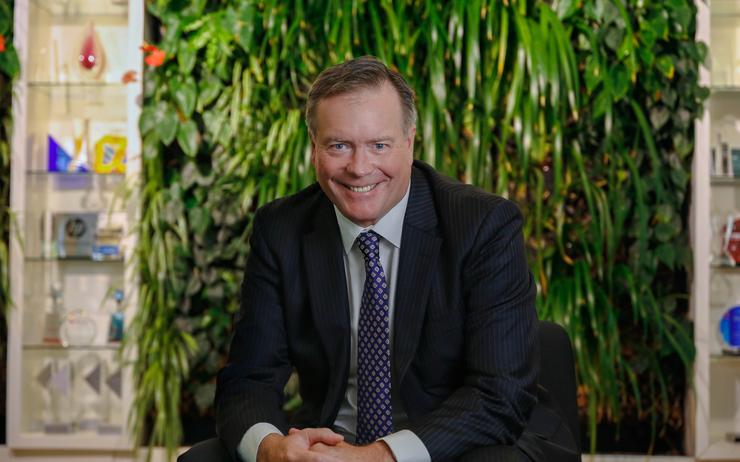
Laurence Baynham (Data#3)
Customers are getting back on the “growth agenda” and Data#3 is ready to roll with it into another financial year.
Having seen 2022 half year revenue skyrocket by 17 per cent to $999.3 million, Data#3 CEO Laurence Baynham is now getting “pretty confident” of closing the year with $2 billion.
Speaking to ARN about the publicly listed company’s prospects for the rest of the financial year, Baynham said he was not too disappointed at not hitting $1 billion in the first half.
“It's like halftime in a game of football,” he said. “We have a big second half to look forward to.”
“Revenue is great in terms of capturing market share and growing the business, but also the profitability and mix of business is heading in the right direction,” he continued. “The profit is where we saw the most satisfaction.”
Indeed, Data#3’s net profit after tax (NPAT) sat at $12.4 million for the six months ended 31 December 2022, a rise of 31 per cent.
“We did better with our services business, which produced a better profit and we also managed our cost base well, so we were able to capture large revenue gains,” Baynham explained.
Also of note for Baynham was recurring revenue accounting for 65 per cent of all revenue over the period, as well as the 35 per cent growth in public cloud revenue, which rose to to $467 million.
"Cloud mostly came from our Microsoft business, so Azure and Office 365 subscriptions. More importantly, it includes a lot of services around the public cloud,” he explained.
“For example, the consulting business grew in the first half. Implementation, design and project services grew. The most pleasing growth was our support services around public cloud – that grew significantly.”
Although unreferenced in its half year report, private cloud is also now playing a critical role in Data#3’s business, driven by vendors such as Cisco, Dell Technologies and HP. Indeed, according to Baynham, private cloud is now equal in growth to public, but much harder to define.
“Customers are utilising public cloud technologies, such as Azure, but using it in-house to effectively run their own cloud to their own customer base,” Baynham explained. “They’re building their own clouds and this has the benefits of scalability, robustness and security.”
Larger enterprise customers and the public sector, which accounts for 50 per cent of Data#3’s business, tend to feel more “comfortable” using private clouds as opposed to going wholly into the public cloud.
A big jump
One area that’s keeping Baynham confident for the next few months is customers’ change in attitude regarding viewing technology as a “cost”. Instead, the attitude is now geared towards how technology can create business growth and transformation.
This, alongside an ongoing shift toward operating expenditure business models, is helping drive Australian customers towards the large transformation projects they may have waylaid during the COVID-19 pandemic.
“The projects that were on the back burner are now coming to the fore and customers are getting back into the growth agenda,” Baynham explained.
“The predictions within the market is 6 per cent growth. We have never seen 6 per cent growth in our market. It may not sound a great deal, but when you have been used to 1 or 2 per cent growth, it is a big jump on the existing market.”
Having snapped up significant infrastructure projects such as transforming Sydney Football Stadium and Queen’s Wharf Brisbane, Data#3 now has a strong pipeline of tenders and is forecasting continued growth of these large-scale projects.
“These transformation projects are changing the way that customers fundamentally operate,” Baynham said. “Those are the ones that we really like because they touch every part of our business.”
Large-scale infrastructure projects also have the bonus of attracting new talent to Data#3. Drawing on his own experience of supply equipment to the construction of the English Channel Tunnel in the early 1990s, Baynham believes in the importance of significant and lifechanging projects in recruiting IT talent.
“A lot of people want to join Data#3 and work on those projects because they feel that they're making a difference,” he said.
Although like everyone other IT business in Australia, Data#3 is facing a dearth of technology skills, it’s a concern Baynham is confident the business can weather.
“We've been around as a business for years. But we've got a solid reputation of when people join us and very rarely leave,” he added. “We've got a long tenure within our business. And some of the reasons for that are because, I think, we're a great place to work.”




